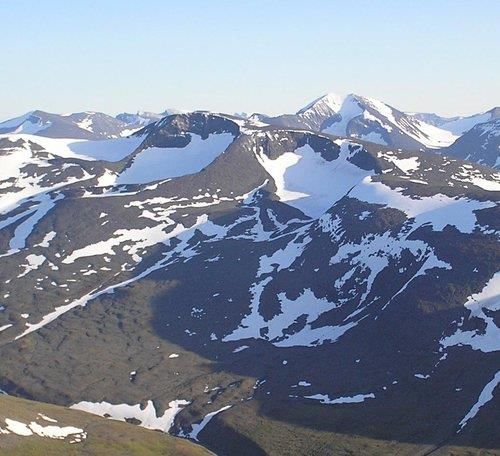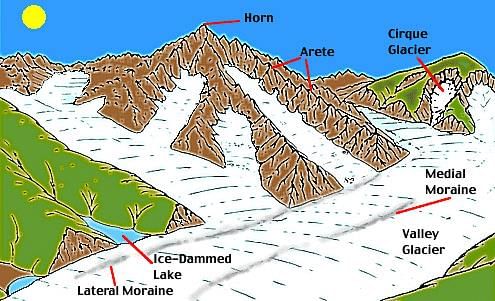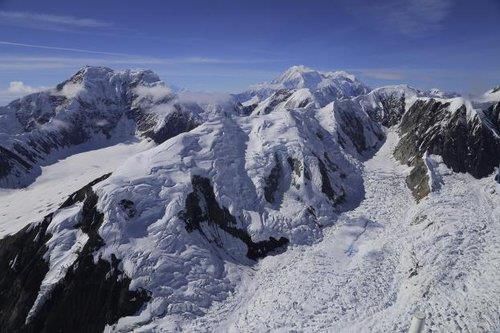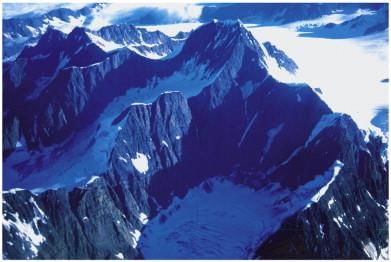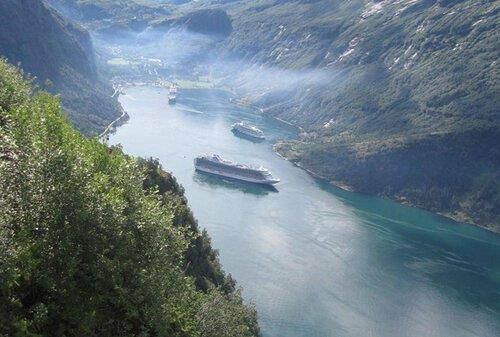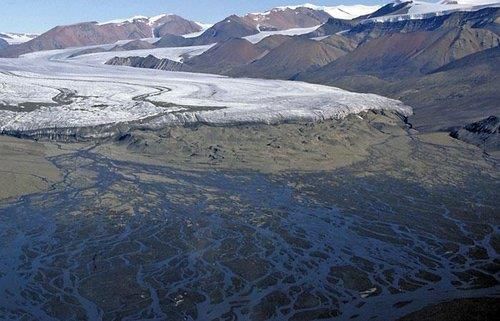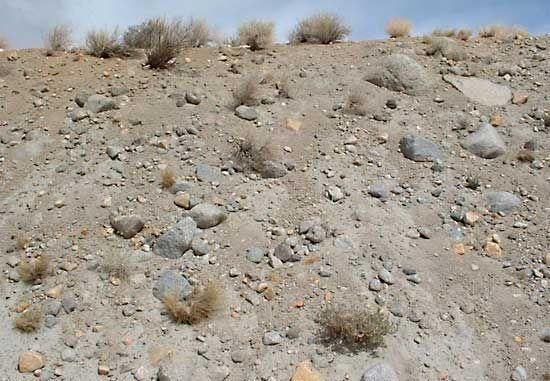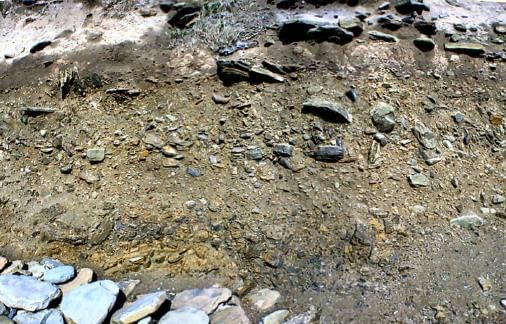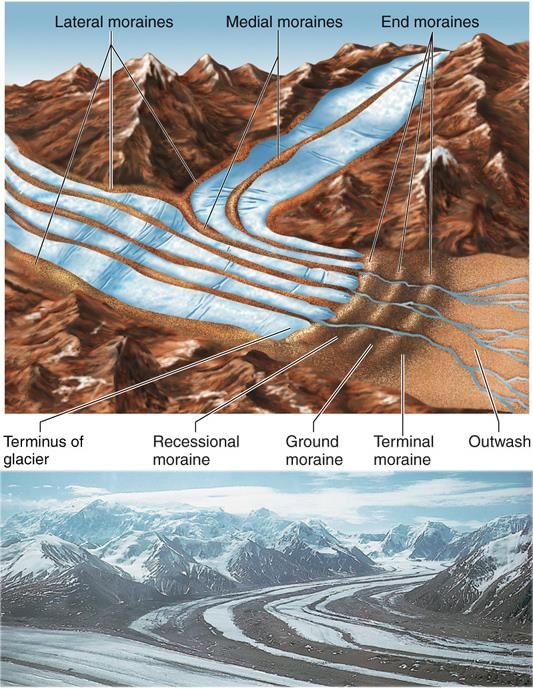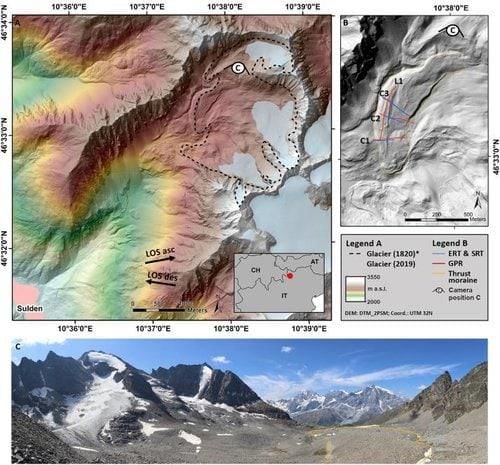|
Cirques are primarily formed through the erosion caused by ___ as they move down the mountain tops. |
Card: 1 / 40 |
|
Fill in the blank: The steep concave to vertically dropping high walls of cirques are formed due to ___ erosion. |
Card: 3 / 40 |
|
Cirques are deep, long, and wide troughs or basins with very steep concave to vertically dropping high walls at their head and sides. 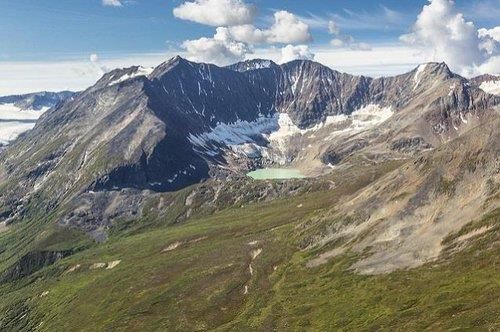 |
Card: 6 / 40 |
|
What happens to the landscape when multiple cirques develop in a stepped sequence? |
Card: 9 / 40 |
|
They create a series of valleys and peaks, contributing to the formation of complex mountain terrain. 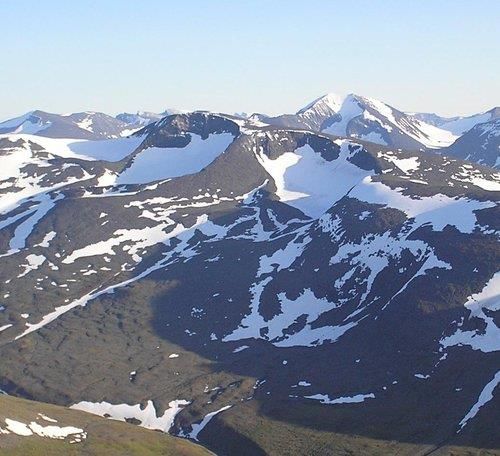 |
Card: 10 / 40 |
|
Fill in the blank: The high, sharp pointed peaks formed by headward erosion of cirque walls are called ___. |
Card: 11 / 40 |
|
The highest peaks in the Alps and Himalayas, such as Matterhorn and Everest, are formed through ___ erosion of radiating cirques. |
Card: 13 / 40 |
|
Glacial troughs that are filled with seawater and create shorelines are referred to as ___ or ___. |
Card: 15 / 40 |
|
The unassorted coarse and fine debris dropped by melting glaciers is called ___ . |
Card: 17 / 40 |
|
True or False: Outwash deposits are characterized by being unstratified and assorted. |
Card: 19 / 40 |
 Unlock all Flashcards with EduRev Infinity Plan Starting from @ ₹99 only
|
|
Glacial till is unassorted and unstratified, whereas outwash deposits are roughly stratified and consist of more rounded fragments, carried by melt-water streams. 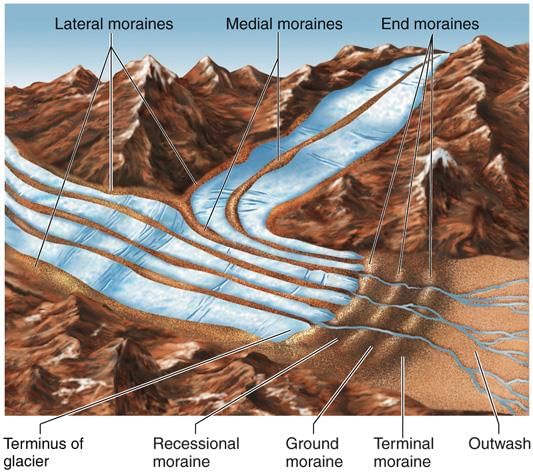 |
Card: 22 / 40 |
|
Fill in the blank: The rock fragments in outwash deposits are somewhat ___ at their edges. |
Card: 23 / 40 |
|
True or False: The rock fragments in glacial till are typically rounded at their edges. |
Card: 25 / 40 |
|
Glacio-fluvial deposits, or outwash deposits, are formed from debris carried by melt-water streams and are stratified and assorted, in contrast to glacial till which is unassorted and unstratified.  |
Card: 28 / 40 |
|
The ridge formed by the joining of lateral moraines that creates a horse-shoe shape is known as a ___ moraine. |
Card: 33 / 40 |
|
Fill in the blank: Ground moraines are deposits that vary greatly in ___ and ___ topography. |
Card: 35 / 40 |
|
A medial moraine is the moraine located in the center of a glacial valley, flanked by lateral moraines. 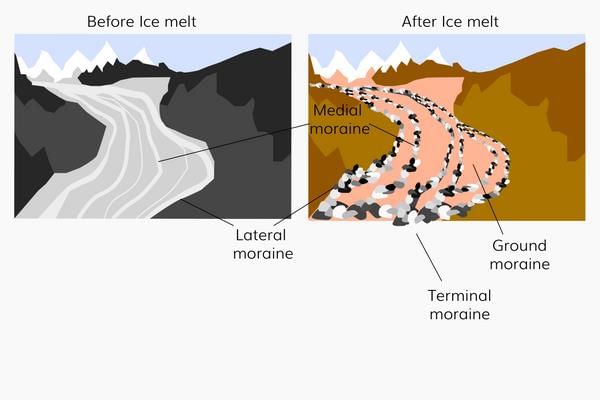 |
Card: 38 / 40 |
|
True or False: Eskers are formed by streams of water flowing on the surface of glaciers. |
Card: 39 / 40 |





